18 9: Special Populations in a Correctional Setting
Key Terms:
|
LGBTQ Population |
Discrimination/Prejudice Issues |
|
Non-citizen populations |
Immigration Policy |
|
Criminal Alien Program |
Detention and Removal Policy (ICE) |
|
Women in Prison |
Aged and Elderly Populations |
This page titled 9: Special Populations in a Correctional Setting is shared under a CC BY 4.0 license and was authored, remixed, and/or curated by Dave Wymore & Tabitha Raber.
: LGBTQ Populations
Throughout history, prisons have reflected the society they are intended to protect-sometimes the most troubling aspects, sometimes the most difficult and intractable aspects, and often the tensions and conflicts that exist within a society. The present California prison crisis is no different.’ The crisis is a product of policy decisions made by the state legislature and the people – including determinate sentencing, the abolishment of discretionary parole, and the three-strikes law – and the popular law-and-order rhetoric of “tough on crime” and the “war on drugs.”, The prison crisis is also a reflection of society’s attitudes towards prisoners as the focus of programs has shifted away from rehabilitation to deterrence and punishment, and as many in prison go without necessary mental health or medical treatment. Special populations fare no differently in the California prison system.
Their treatment in the criminal justice system generally reflects not only society’s view of prisoners, but also mirrors government policies concerning these groups and the discrimination or prejudices that these groups face. This mirroring happens through deliberate actions, as exemplified by the cooperation between county jails and Immigration Customs Enforcement (“ICE”), or through willful ignorance, as illustrated by the prevalent policy of anatomically classifying transgender prisoners for housing purposes with the result being high instances of sexual assault and rape among this population. The criminal justice system is not only a reflection of our society; the system and its policies shape other institutions and the attitudes of the society.
Given time constraints, the conference limited its panel on special populations to three groups: transgender, immigrant, and women prisoners. Thus, this piece is limited accordingly. In discussing these populations, certain commonalities arose. Receipt of appropriate medical care was discussed, including concerns regarding inadequate medical care because of language difficulties and reluctance to provide hormone treatment to transgender individuals. In addition, housing assignments and facilities placement was a shared concern. Given the increased collaboration between the Department of Homeland Security and local and state governments, immigrants face the possibility of out-of-state placement or deportation. Women and transgender individuals are particularly vulnerable to sexual violence in correctional institutions, thus, housing assignment is key in preventing these occurrences. Although this issue has been addressed to a large extent for the non-transgender female population, the transgender population continues to face high risks of violence, and the state is now considering legislation that would ostensibly provide some protection. Of course, there are specific differences among these special populations that arose as well, such as the intersection between the federal and state government policies concerning the immigrant population in prison. In addition, in examining these three populations, it is important to note that there are some prisoners who belong to more than one of these communities and, thus, may face further dangers and difficulties in prison.
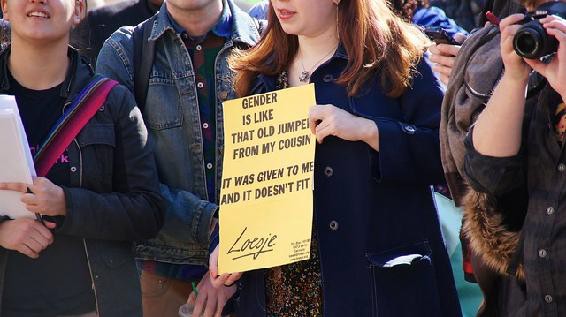
Figure 9.1 A rally in Washington, DC in support of the equal health and livelihood of trans people, that included basic information about trans health issues and stories of denied / inappropriate care, as well as hope for the future. Taken March 30, 2013. Image is under a CC.By 2.0 license.
For many decades, the treatment of transgender individuals in prison was largely ignored in California. However, in the past decade, there has been a growing awareness and focus on this issue as illustrated by research studies highlighting the high incidence of sexual assault and rape against transgender prisoners, a series of legal cases against the California Department of Corrections and Rehabilitation (“CDCR”), and recently introduced legislation regarding housing assignments intended to protect transgender prisoners. Although there has been no official count of the number of transgender prisoners within the California correctional system, Alexander Li-Hua Lee, the founder and former Legal Director of the Transgender, Gender Variant, and Intersex Justice Project and a panelist at the conference, has estimated that there are probably two hundred transgender prisoners and at least another thousand that are gender variant. The incarceration rate among transgender individuals is disproportionately
high. A study by the San Francisco Department of Health found that close to two-thirds of male-to female transgender individuals in San Francisco had previously been incarcerated.
The high incarceration rate has been attributed to exclusion of this population from the legal economy, which forces many of its members to turn to illegal activities and thus greatly increases their risk of arrest.
The transgender community is particularly vulnerable to sexual assault and rape within prison. The number of individuals who have been victims of sexual violence in prison is staggering. A recent CDCR study showed that sixty-seven percent of lesbian, gay, bisexual, and transgender (“LGBT”) prisoners report having experienced sexual assault – a rate that is fifteen times higher than the rate for overall population.
A CDCR-UC Irvine study revealed that fifty-nine percent of transgender women were sexually assaulted while in California correctional facilities, translating to the disturbing fact that transgender women are thirteen times more likely to be sexually assaulted while in prison. While two or three percent of general population in correctional facilities reported rape, forty-one or fifty percent of transgender individuals reported rape. In contrast to non-transgender prisoners, who reported general awareness and responsiveness from prison officials when sexual assault incidents occurred, transgender prisoners reported that officials were generally unaware of the incidents, and no medical attention was provided most of the time.
The vulnerability of the transgender population to sexual assault and rape in prison is caused in large part by the prison system’s classification of transgender individuals and the repercussions of that classification on their housing placements. The prison system relies heavily on a dichotomous, sex-based means of classification. Prisoners are classified by their biological attributes rather than their gender identification. As described by William (“Joe”) Sullivan, Associate Secretary of the CDCR in December 2008, “the classification process is gender-neutral We really don’t distinguish between transgender and non-transgender inmates.” Thus,
preoperative, male-to-female transgender prisoners are often placed in men’s facilities. Although CDCR recently amended its Department Operations Manual in April of 2009, to require consideration of whether the prisoner has been a victim of sexual assault in initial and subsequent assignments to double-cell housing, this consideration does not affect the classification of prisoners as male or female for purposes of facilities assignment.
Recent legislation may help address this issue. Assembly Member Tom Ammiano introduced AB 382 in the California Assembly in February of 2009. AB 382, entitled the LGBT Prisoner Safety Reform Act, would amend the Sexual Abuse in Detention Elimination Act of 2005 by adding self-reported safety concerns related to sexual orientation and gender identity” to a list of factors to be considered for purposes of classification and housing assignments of prisoners.
Note
Think about it . . .Transgender Prisoners
In 2015 California became the first state in the nation to agree to pay for transgender prison inmates to receive sexual reassignment surgery. Prison officials released specific guidelines in the wake of several lawsuits. Follow the link above to understand why some people feel that this is an important issue and why others believe it is unnecessary.
- : LGBTQ Populations is shared under a CC BY 4.0 license and was authored, remixed, and/or curated by LibreTexts.
: Non-Citizen Populations
Non-Citizens represent approximately seventeen percent of the adult prison population in California. In addition to those who are undocumented (i.e., without legal status in the United States), others are non-citizens who are legally within the United States as long-term permanent residents or on visas. Strikingly, the institutionalization rates for these non-citizen populations are significantly lower than their U.S.-born counterpart. However, given the large number of non-citizen (immigrants) in California and the complex intersections between federal immigration law and the criminal justice system, the immigrant experience in California prisons is truly distinctive. Moreover, the laws and policies discussed in this section affect not only non-citizens (whether illegal or legal) but can at times affect U.S. citizens who are perceived to be noncitizens due to their race, appearance, name, or birth abroad.
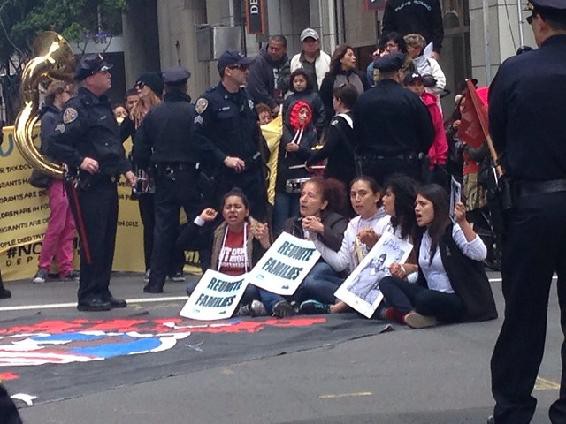
Figure 9.2 Immigration/Deportation Demonstration in San Francisco April 4, 2014. Image is under a CC.By 2.0 license.
Note
Think about it . . . Non-Citizen Inmates
“About one in five inmates in federal prison are foreign-born, and more than 90 percent of those are in the United States illegally, according to a report compiled by the Department of Homeland Security and the Department of Justice in 2017. Some immigration experts claims that the Trump administration has inflated these number to justify a firmer stance on immigration issues. What do you think? Consult this NYT article for more information and sources and this topic.
The ongoing debate concerning immigration policy – combined with the public’s fear about immigrant involvement in criminal activity and the current correctional crisis in California have led to the blending of federal immigration and national security policies with state and local correctional policies. The result is a unique set of policies and procedures that are applied to noncitizens or perceived noncitizens who enter the criminal justice system. Federal immigration enforcement programs such as the Criminal Alien Program, Secure Communities, and the 287(g) programs in most cases encourage and often rely on local authorities to work with ICE from the time of arrest throughout the criminal justice process to identify all suspected noncitizens who may be removable from the United States. In California, the Criminal Alien Program is the most extensively employed.
The Criminal Alien Program focuses on identifying “criminal aliens, who are detained in federal, state, and local facilities and seeks their removal prior to their release from criminal custody. This program begins with local police and jails collecting place-of- birth information from individuals at arrest or upon booking into jail. This information is shared with ICE’s Office of Detention and Removal Operation (“DRO”), whose officers screen and interview the identified individuals. Upon the initial suspicion that an individual may be a noncitizen, including a lawful permanent resident who may be subject to removal from the United States, a “detainer” or immigration “hold” is placed on the individual, preventing his or her release until custody is transferred ICE. A person can be transferred to ICE at any point in the criminal process, even if they are not charged or convicted of an offense. In California, individuals who are convicted and sentenced and have an ICE hold placed on him or her are transferred to ICE custody after completion of their California sentence. Upon taking of custody, ICE either transports the prisoner to a detention center pending immigration proceedings or immediately removes them from the country.
In addition to these programs designed to identify “criminal aliens” for purposes of deportation, states and counties receive federal reimbursements for housing undocumented immigrants through the State Criminal Alien Assistance Program (“SCAAP”). The State of California is the largest recipient of SCAAP funds, having received upwards of $85 million through this program in recent years.
Immigrant and civil rights advocates have voiced multiple concerns regarding the increased coordination between federal agencies and state and local authorities, arguing that the blending of immigration enforcement with the criminal justice system is problematic and fraught with error. From the outset, there has been much criticism that the process of identifying potential noncitizens is laden with racial and ethnic bias, and that appearance and last names are used as proxies for citizenship to determine who should be scrutinized. In addition, critics argue that given the complexity of immigration law there is much room for error in the process of identifying potential noncitizens, and that many individuals who are actually U.S. citizens have had ICE holds placed on them. In one poignant example, Mark Lyttle, an American citizen who is bipolar, was deported after signing statements that he was a Mexican citizen, although he had a valid Social Security number. On a broader scale, immigrant and civil rights advocates contend that these federal and state partnerships have fueled anti-immigrant sentiment and the criminalization of immigrants in the media and the public at large.
Immigrant prisoners continue to be at the forefront of the political debate about the California corrections crisis. State politicians and CDCR have specifically identified the immigrant population as a way to ameliorate the overcrowding crisis facing state prisons. Following the Governor’s Prison Overcrowding State of Emergency Proclamation in 2006, CDCR has prioritized the involuntary transfer of noncitizens, including those who are legal residents, to out-of-state facilities. Recently, CDCR implemented a new policy to discharge criminal aliens from state parole once deported, ensuring that should they reenter the country, they are taken into federal rather than state custody. As the immigration reform debate continues nationwide and as California continues to grapple with the overcrowding crisis in its prisons, the fate of immigrant prisoners in the California correctional system remains to be seen.
- : Non-Citizen Populations is shared under a CC BY 4.0 license and was authored, remixed, and/or curated by LibreTexts.
: Women
There are over 11,000 women in prison in California, constituting approximately seven percent of the overall prison population. Although a seemingly small percentage, the female prison population has been growing more rapidly than its male counterpart since the mid-1980s. Since the 1970s, the female prison population in California has increased more than ten-fold. In 1977, California penal institutions housed 671 female prisoners; in 1987, there were 4,152 women incarcerated in CDCR facilities; in 2007, there were 11,416. As with the general prison population, experts have attributed the increase in the numbers of incarcerated females to California’s shift away from the indeterminate sentencing regime in the 1970s, various “tough on crime” policies, legislation enacted as part of the “war on drugs,” and other developments in law enforcement and parole policy generally, including a policy shift from reform and rehabilitation to punishment and deterrence.
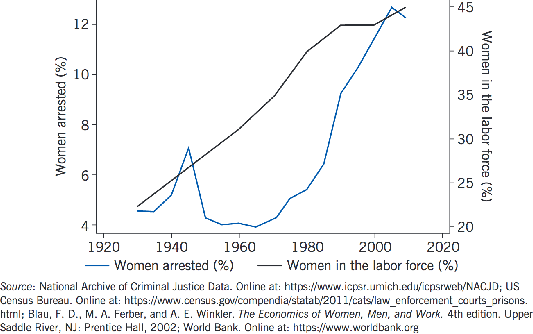
Figure 9.3 Graph of Women Arrested vs. Women in the labor force. Image is in the public domain.
Most incarcerated women have been convicted of nonviolent offenses. In 2007, only 32.1% of women prisoners were convicted of crimes against persons; the remaining 67.9% were convicted for nonviolent property crimes, drug crimes, and other nonviolent crimes. In contrast, 53.5% of the men incarcerated in 2007 were convicted of crimes against persons. Because of the nature of the crimes for which they are convicted, females tend to have sentences that are far shorter than their male counterparts. The median sentence for women prisoners in CDCR institutions in 2007 was nine months. Similar to the male population, formerly incarcerated females have a high rate of recidivism. A recent study by CDCR found that forty-six percent of women released in 2003 returned to prison within three years; another CDCR study indicated that between twenty-seven to thirty-three percent of female parolees recidivate within a year.
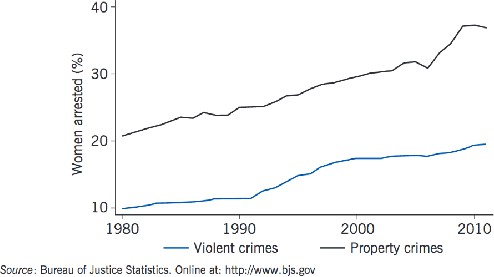
Figure 9.4 Graph of Women arrested (%) for Violent crimes vs. Property crimes. Image is in the public domain.
Although sharing some characteristics with their male counterparts, certain differences in the profile of incarcerated women reveal gendered causes for their imprisonment, and unsurprisingly, their incarceration has certain gendered effects. As with the prison population generally, the majority of women prisoners are women of color; many come from neighborhoods entrenched in poverty; and many have substance abuse issues. However, a disproportionately greater percentage of women prisoners have experienced physical and sexual abuse prior to admission into prison. There are also higher levels of physical and mental health issues among female prisoners. In addition, almost half of incarcerated women are the sole caregivers for their children. Thus, incarceration has
an immediate effect on the children who often end up in foster care, as well as a fragmenting effect on their families generally and their communities.
Given the relatively unique characteristics of this population – including the nonviolent nature of the offenses, the shorter sentences, socio-economic factors, and motherhood – advocates, academics, and community members have strongly criticized the placement and treatment of incarcerated women in the existing institutions and programs and have strongly urged for the adoption of gender responsive approaches. These sentiments were echoed by the Little Hoover Commission, an independent state oversight agency in 2004.
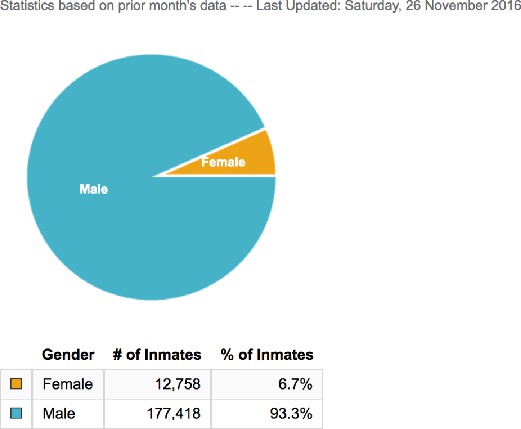
Figure 9.5 Pie Chart of numbers and percentages of inmates by gender.
Since the Commission’s findings in 2004, California has undertaken various reform measures to address some of these concerns. In 2005, CDCR established the office of Female Offender Programs and Services within the Division of Adult Institutions and created the Gender Responsive Strategies Commission (“GRSC”) as an advisory committee. In addition, CDCR developed a phased housing plan to shift Level I and II women prisoners to community based facilities and generally has begun a new gender- responsive classification system for women. In 2007, the legislature enacted California Penal Code section 3430 that required CDCR to develop a “Female Offender Reform Master Plan” and to create policies, operational practices, and programs designed “to ensure a safe and productive institutional environment for female offenders, as well as gender-responsive rehabilitative programs and needs-based case and risk assessment.
Despite these efforts, Women’s prisons still remain at over two hundred percent overcrowding levels. Many of the rehabilitative programs have yet to be implemented, and the construction of many of the community-based facilities have been delayed.
- : Women is shared under a CC BY 4.0 license and was authored, remixed, and/or curated by LibreTexts.
: Aged and Elderly Populations
Over the past two decades, the number of state prisoners age 55 or older sentenced to more than 1 year increased from 26,300 to 131,500 prisoners. This represented an increased from 3% of the state prison population in 1993 to 10% in 2013. Between 1993 and 2013, the median age of prisoners increased from 30 to 36 years. The prison population’s changing age structure has implications for the management and care of inmates. Two main factors contributed to the aging of state prisoners between 1993 and 2013: a greater proportion of older prisoners were serving longer sentences, predominantly for violent offenses, and the number of admissions of older persons increased. Both the admission rate and yearend imprisonment rate for state prisoners age 55 or older increased from 1993 to 2013, which indicates that the aging U.S. resident population was not solely responsible for the growth in older offenders in prison.
The imprisonment rate for prisoners age 55 or older sentenced to more than 1 year in state prison increased from 49 per 100,000
U.S. residents of the same age in 1993 to 154 per 100,000 in 2013. Forty percent of state prisoners who were age 55 or older on December 31, 2013, had been admitted to prison when they were at least age 55, and 60% turned age 55 while serving time in prison. Additionally, 40% of state prisoners age 55 or older on December 31, 2013, had been imprisoned for at least 10 years, compared to 9% in 1993.
The growth in state prison admissions from 1993 to 2003 was driven by people ages 40 to 54 (up 162%) and those age 55 or older (up 124%). Admission to prison of people age 55 or older increased 82% between 2003 and 2013. During the same period, state prison admissions declined 12% for those age 39 or younger and 11% for those ages 40 to 54. People age 55 or older accounted for 1% of state prison admissions in 1993, 2% in 2003, and 4% in 2013. The mean age at admission also increased, from 30 years in 1993 to nearly 34 years in 2013.
Prisoners age 55 or older had consistently higher mean sentence lengths, increasing from 76 months in 1993 to 82 months in 2013 across all offenses. In comparison, prisoners ages 18 to 39 were sentenced to a mean of 64 months in 1993 and 69 months in 2013. The mean sentence length for new inmates ages 40 to 54 increased from 65 months in 1993 to 71 months in 2013. Across all age groups and offense types, the mean time prisoners expected to serve on a new court commitment when entering state prison increased from 29 months in 1993 to 39 months in 2013. Prisoners age 55 or older convicted of new violent crimes received longer sentences and could be expected to serve a higher proportion of their sentences than younger offenders. Prisoners admitted in 2013 when they were age 55 or older could expect to serve an average of more than 182 months (15 years) for new violent offenses, compared to 116 months (10 years) for those admitted at ages 40 to 54 and 55 months (almost in 5 years) for those ages 18 to 39.
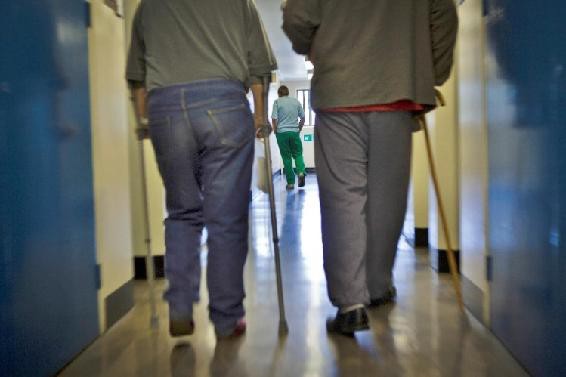
Figure 9.6 Two elderly & disabled prisoners walking down ‘A’ wing of HMP & Young Offenders Institute ‘Littlehey’. Image is used under a Creative Commons Attribution-Share Alike 4.0 International license.
Many older prisoners in the past two decades were serving long sentences for violent crimes. More than 65% of state prisoners age 55 or older were serving time for violent offenses between 1993 and 2013, compared to a maximum of 58% of other age groups. In 2013, 48% of state prisoners age 55 or older were serving sentences for murder or non-negligent manslaughter or sexual assault, compared to 31% of those ages 45 to 54 and 27% of those ages 35 to 44.
Although the rapid rise in the aging prison population is often attributed to the overall rise in the U.S. aging population, researchers attribute several factors to the recent growth. The Bureau of Justice Statistics cites two primary reasons in the Aging of the State
Prison Population 1993–2013 Report. First, data indicate there has been an increase in the number of older adults who commit crimes and enter the prison system at an older age. While there were 2 million fewer arrests in 2012 than in 1993, arrests of people age 55 and older increased by 77 percent in the same time period. Another factor contributing to the growth of the older prison population is longer prison terms. The number of prisoners aged 55 and older who were sentenced to more than one year in prison increased from 26,300 in 1993 to 131,500 in 2013—a 400 percent increase. Older people may have longer criminal histories and therefore be more likely to be affected by multiple strike laws. Additionally, individuals who entered the system in young or middle age are aging in place in the prison setting. For example, between 1993 and 2003, prisoners aged 45–49 were the fastest-growing age bracket in the prison population. Thus, by 2013, many had aged into the category of older prisoner.
The aging of the prison population has implications for the quality and type of services they receive in the correctional system, as well as for reentry services since the vast majority of prisoners return to the community at some point. In terms of care for aging prisoners within the correctional systems, considerations include the need for a physical infrastructure within the prison facility that supports people as they age (accessible cells, grab bars, alternatives to bunk beds), programming geared for older inmates (employment, skills training, recreation), health needs (addressing physical and mental health conditions, medication management), prison workforce needs (additional staff may be needed to provide personal care assistance with bathing, dressing and moving around the institution). There is also support needed when older inmates are paroled or prepare to return to the community to ensure successful reentry into society and prevent recidivism. Access to services such as transportation and housing, assistance finding employment, connection with a social support system, access to physical and mental health care, and help with signing up for benefits are important factors in a successful reentry.
With the Bureau of Prisons’ changes to the compassionate release program in 2013, prison systems have given greater attention to compassionate release programs. The concept behind compassionate release is that it provides a community-based option for prisoners who have an “extraordinary or compelling” reason for release, such as a terminal illness, progressive illness or debilitating injury from which they will not recover. Compassionate release may also be a factor in helping to address prison overcrowding, particularly since older prisoners are less likely to recommit crimes. However, compassionate release options are not always well-utilized due to eligibility limitations, the bureaucracy of navigating the compassionate release process, and lack of public support for these programs. When compassionate release is utilized, it can present different challenges. For example, finding an appropriate placement for individuals who are terminally ill and setting up appropriate benefits in advance to ensure that the released individual has resources to pay for care can be challenging. As a result, nursing homes have reported situations where older prisoners have been “dumped” in their facilities with little or no resources or services in place for the person to live successfully. Lack of social acceptance and fear of this population returning to the community or entering a community-based long- term care setting is an ongoing challenge.
- : Aged and Elderly Populations is shared under a CC BY 4.0 license and was authored, remixed, and/or curated by LibreTexts.
